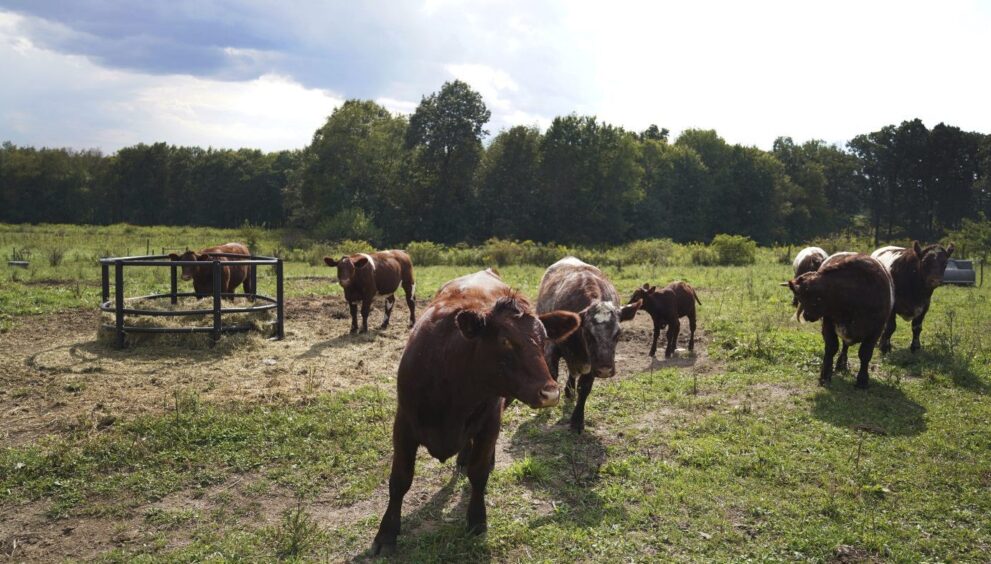Ensuring Protection for Small Farmers Amid Significant Changes

The vetting process for Brooke Rollins, who is in line to become the next U.S. secretary of Agriculture, is happening at a time when numerous transformations are occurring in America’s agricultural sector.
The surge in land prices and the increased involvement of institutional investors in farmland are posing challenges for small farmers trying to stay competitive. These shifts are straining rural communities, leading many farmers to leave the industry, even as food prices rise and local product demand grows.
The implications are considerable. With over 400 million acres of farmland expected to change hands in the next ten years due to the aging farming population retiring, whoever gains control of this land will shape the next phase of farming and food production in the U.S. Measures like limiting institutional investment in farmland, promoting community efforts like land trusts, and providing government support through agricultural credits and subsidies should help ensure that small farmers remain a key part of American agriculture.
The financial crisis of 2008 had devastating effects on urban and suburban areas, causing more than a million individuals to lose their homes to foreclosure. Since then, institutional investors have become significant owners of housing and valuable urban and suburban land, a trend that has accelerated during the ongoing pandemic.
Rural regions, despite being in a weaker position to begin with, have experienced similar challenges. Small farmers, once self-sustaining and independent, started facing mounting pressures for their land from large agricultural corporations and an increasingly competitive global market by the mid-to-late 20th century. A lopsided subsidy system arose, favoring select crops like corn, soy, and wheat that were more profitable when farmed on a larger scale. This was accompanied by regulatory capture favoring big agriculture, especially in sectors like dairy and meatpacking.
The 2008 financial crisis and the pandemic have brought new hardships for small farmers. The value of farmland owned by investment groups has grown nearly tenfold since 2008 and tripled in the last three years. This surge has coincided with a nearly 40% increase in farm real estate values over the past decade. Investors find farmland attractive due to high inflation and stock market volatility, as farm prices tend to parallel inflation rates and rarely decrease.
Small farmers are increasingly concerned about the financialization of farmland. Pension funds and university endowments are amassing vast land portfolios, outcompeting family farmers and draining rural communities of life. Besides, wealthy individuals like Bill Gates, Jeff Bezos, the Emmerson family, Ted Turner, and John Malone have acquired substantial farmland holdings. Many farmers fear that this trend will persist as the aging farming population exits the industry and land values continue to rise due to climate change.
Ongoing trends towards reduced farmland availability and larger farm sizes make these ongoing changes more pronounced. Farmland acreage is decreasing by about 35 million acres every ten years due to development pressures. Meanwhile, average farm sizes have more than doubled since 1950, with the average now exceeding 460 acres, giving larger farms a competitive advantage. Currently, 40% of farmland in the U.S. is owned by just 8% of farms.
Minority farmers face unique challenges. At the start of the 20th century, nearly 14% of American farmers were Black. However, due to generations of discrimination and limited access to USDA resources, minority farmers now control only 2% of farmland, while 60% of farmworkers are people of color. Policies enacted during the previous administration put many of these farmworkers at risk, a majority of whom are immigrants without proper work authorization.
Preserving the viability of small farms is crucial for U.S. employment, food security, and the prosperity of rural communities. One possible solution is the establishment of community land trusts, which remove land from the open market and place it under community management. These trusts are becoming more prevalent and can assist in protecting and supporting small farmers, but they require increased investment to operate effectively at scale.
Federal and state governments play vital roles in offering small farmers access to financial support and assistance for various crops. Just last summer, the federal government initiated payments to thousands of farmers who were discriminated against in previous government farm aid programs.
Additional efforts to limit institutional investment in farmland are necessary. Certain states have already introduced investment restrictions, and there have been proposals in Congress to limit farmland acquisitions by institutional investors.
Small farmers from all backgrounds are eager for fair treatment under the next U.S. secretary of Agriculture, and they are poised to remain a driving force in American agriculture. Michael Albertus, a political science professor at the University of Chicago and author of “Land Power: Who Has It, Who Doesn’t, and How That Determines the Fate of Societies,” explains the urgent need for sustained protection for small farmers in these changing times.






















































































































































































































































































































































































































































































































































































































































































































































































































































































































































































































































































































































































































































































































































































































































































































































































































































































































































































































































































































































































































































































































































































































































































































































































































































































































































































































































































































































